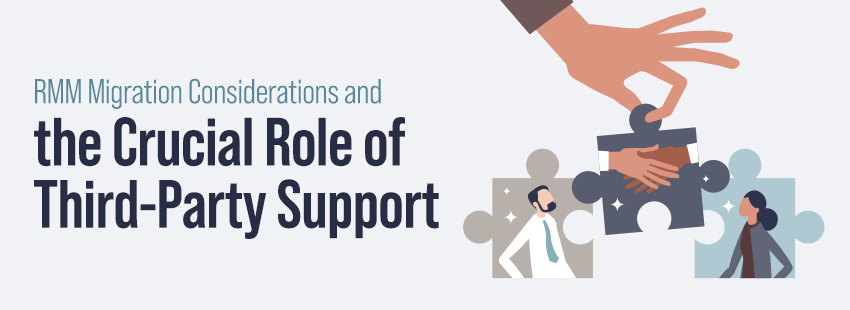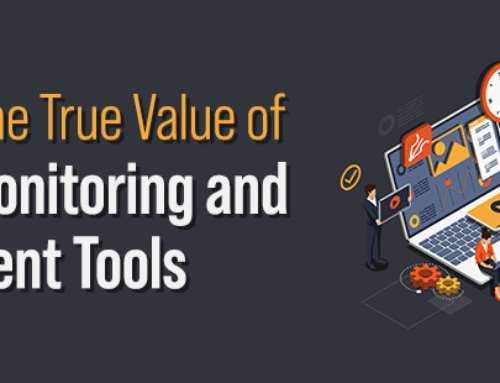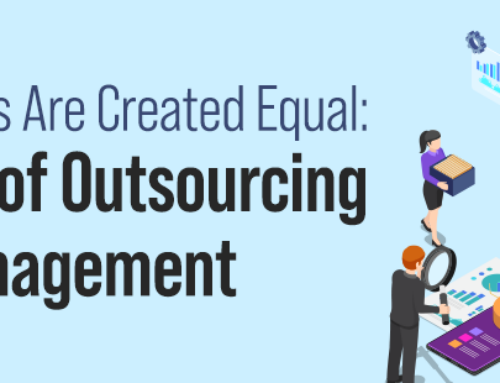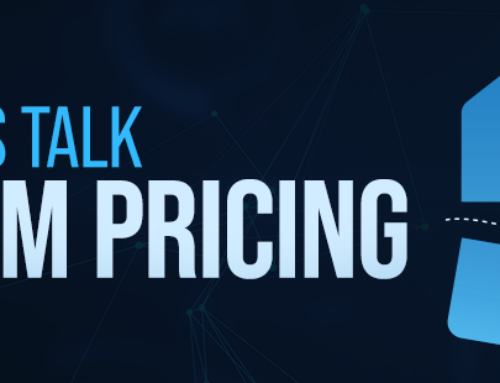Remote Monitoring and Management (RMM) tools play a pivotal role in ensuring the smooth operation of businesses. As technology advances and new solutions emerge, organizations may find themselves contemplating a migration from one RMM tool to another. However, such a transition has its challenges, and careful consideration is essential to ensure a seamless and successful migration. In this blog post, we will explore key considerations when migrating from one RMM tool to another and highlight the crucial role that third-party support can play in this process.
- Assessment of Current Infrastructure:
Before diving into the migration process, it is very important to conduct a thorough assessment of the existing IT infrastructure. This involves identifying the current RMM tool’s strengths, weaknesses, and areas for improvement. Understanding the specific needs and goals of the organization is crucial in selecting a new RMM tool that aligns with these requirements. This assessment lays the foundation for a successful migration by providing insights into the functionalities that must be preserved and improved upon.
- Data Migration and Integration:
One of the most challenging aspects of transitioning to a new RMM tool is the migration of existing data. Data encompasses everything from client configurations and device information to historical performance data. It is essential to have a robust data migration plan in place to prevent data loss and ensure a smooth transition. The new RMM tool should seamlessly integrate with existing systems, minimizing disruptions to daily operations.
- User Training and Adoption:
The success of any migration largely depends on the users’ ability to adapt to the new tool. Training sessions should be organized well in advance to familiarize the IT team with the features and functionalities of the new RMM tool. User-friendly documentation and resources should be provided to facilitate a smooth learning curve. Additionally, a phased approach to implementation can help ease the transition, allowing users to gradually become comfortable with the new tool without overwhelming them.
- Vendor Support and Training:
When considering a migration, evaluating the level of support provided by the new RMM tool’s vendor is crucial. This includes not only technical support but also comprehensive training resources. A vendor that offers robust support and training programs can significantly contribute to the success of the migration. Organizations should seek vendors with a track record of actively assisting clients during the transition period.
- Customization and Scalability:
Every organization has unique requirements, and the new RMM tool should be flexible enough to accommodate these needs. Customization options play a vital role in tailoring the tool to specific workflows and processes. Moreover, scalability is essential to ensure that the RMM tool can grow alongside the organization. A tool that can adapt to changes in scale and complexity ensures a longer lifespan and a more sustainable investment.
- Third-Party Support in RMM Migration:
The role of a third-party support provider must be balanced in the context of RMM migration. Third-party experts bring a wealth of experience and knowledge to the table, often serving as a bridge between the organization and the new RMM tool vendor. These experts can assist in the assessment of the current infrastructure, providing unbiased insights and recommendations.
Third-party support is particularly valuable in data migration and integration. These experts understand the intricacies of transferring data from one system to another and can navigate potential challenges. Their experience with various RMM tools positions them as valuable resources in ensuring a seamless transition without compromising data integrity.
In terms of user training and adoption, third-party support providers can offer specialized training programs tailored to the organization’s needs. Their objective perspective allows them to identify potential areas of resistance and address them proactively. This can significantly reduce the learning curve and enhance user acceptance of the new RMM tool.
Vendor support and training are areas where third-party support can act as a supplement to the services provided by the RMM tool vendor. These experts can fill gaps in support, offering additional resources and insights to ensure that the organization receives comprehensive assistance throughout the migration process.
Customization and scalability are also areas where third-party support can shine. Their expertise in different RMM tools allows them to recommend, migrate and implement customizations that align with the organization’s unique requirements. Additionally, third-party experts can advise on the scalability of the chosen RMM tool, ensuring that it can grow with the organization’s evolving needs.
Conclusion:
Migrating from one RMM tool to another is a complex process that requires careful planning and execution. By considering the key aspects discussed in this blog post, organizations can pave the way for a successful transition. Furthermore, the involvement of a third-party support provider can significantly enhance the chances of a smooth migration, bringing valuable expertise and assistance to every stage of the process. As technology continues to advance, embracing change and leveraging the right support can position organizations for continued success in their IT management endeavors.




